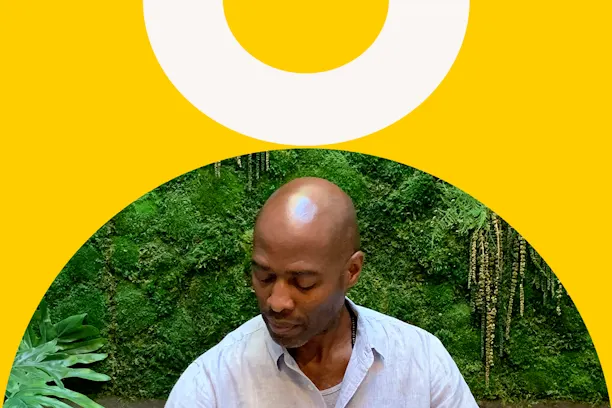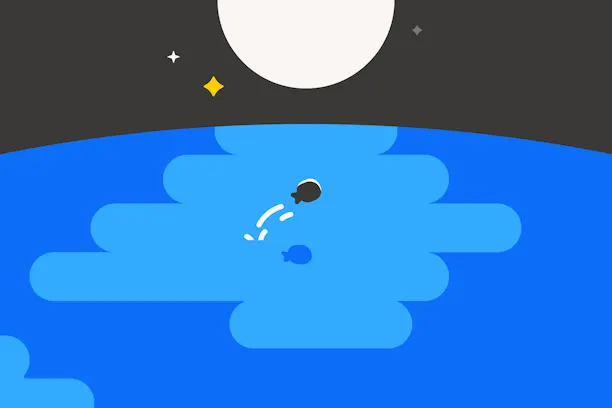Does anyone care about the Earth after Earth Day?
Ellie R.
Jun 14, 2021
Six months ago, I moved to Los Angeles, a city whose public transport system is a bit like getting a spoon wrapped in toilet paper as a birthday present: inadequate and, frankly, insulting. Being both stubborn and a truly awful driver, I’m often found sweating at bus stops, but sometimes I get behind the wheel.
Every time this happens, I get stuck in traffic and my thoughts start to snowball: Look how dry those hills are. And these cars are only making the drought worse. What will happen to California? Will anyone be able to live here in thirty years? By this point my shoulders have turned to concrete and my jaw is clenched. Where will we all go when we leave? And here you are belching more fumes into the air just to get to a silly meeting. Friends tell me they feel similar pangs every time they get on a plane, take out another bag of trash, or unpack groceries wrapped in unfathomable layers of plastic—and hell, I feel pretty miserable doing all those things too. Others have developed different responses to climate change: some simply avoid the bad news, and some defend themselves by denying there’s a problem at all, in the face of 97 percent scientific consensus. At the other end of the spectrum, climate scientists and activists are struggling with overwhelm, depression, and anxiety as they confront the facts day after day. Camille Parmesan, who shared a Nobel Prize for her work with Al Gore, almost quit research altogether a few years ago, declaring she was “professionally depressed.” Imagine winning a Nobel Prize and then wanting to abandon your life’s work–things would have to be bad. Protecting the planet is one of those things that seems to happen elsewhere—in forests and at polar ice caps—but it’s becoming increasingly clear that the first battleground is actually much closer to home: it’s in our heads. Mental health professionals are now turning their attention to the role of emotions in protecting the environment, through organizations such as the Climate Psychology Alliance, a collective of psychotherapists, analysts, and activists. Professor Paul Hoggett, chair of the Climate Psychology Alliance and a practicing psychotherapist, told me: “The trouble for all of us is how we can occupy the space between a defensive denial of the facts on the one hand, and despair and apocalyptic thinking on the other.” After all, despair and guilt can be paralyzing, and paralysis is just as useless as denial.

"Experts on climate psychology also encourage this second kind of connectedness—to the earth."

So how do we occupy that space? For those of us, like me, who are currently feeling a lot of paralyzing guilt, Professor Hoggett has some advice: “The best way to come to terms with it is to understand that this is a perfectly natural, normal reaction that everybody else shares, you’re not alone, you’re not peculiar in some way. The worst thing to do is to feel in some way inadequate and therefore try to suppress it or get rid of it by, for example, seeing other people as the guilty or shameful ones.” Buddhist scholar and environmental activist Joanna Macy agrees that it’s essential to engage with fear and guilt rather than suppressing them. In 2001, she wrote: “The greatest peril is not nuclear war weapons, not climate change or the poisoning of seas and soil and air… The greatest danger is the deadening of our hearts and minds. It arises not from indifference, but from fear. We fear we can’t stand it, if we take it all in. We fear we might be shattered by pain, or stuck in despair forever.” Those words are a good description of my mental state every time I sit on the freeway: teetering, terrified, on the brink of a despair I’m scared will swallow me whole. But there are practical steps toward engaging with the problem without being shattered by pain. Professor Hoggett says: “One of the best ways to contain difficult feelings like loss or guilt or terror is to be with others who are supportive…The people who do things like occupy power stations and airport runways are very clear about the need to provide each other with support. They have things like trauma support networks. They attend very closely to the need to help each other with their fears and anxieties.”
This advice is echoed by 26-year-old Isobel Mercer, an assistant advisor at environmental consultancy Mercer Environment Associates. She says she and her network of young environmentalists often talk about how to stay sane while doing the work they do. For Isobel, spending time with others is an essential coping strategy—and it can be especially helpful to be around people who understand the issues but aren’t actively involved in the fight. This is a valuable reminder that any difficult work has to be punctuated by periods of genuine rest, otherwise, it’s simply not sustainable. Yoga and mindfulness practices are popular among Isobel’s environmentalist friends, too: “Just being quiet and emptying your brain helps,” she says. For Isobel, getting into nature is also crucial: “I live in London,” she says, “but I grew up by the sea and the woods, and I try to make sure that I go into nature every couple of weeks. Otherwise it’s hard to remember why you’re doing what you’re doing, what it is you’re fighting for. Staying connected to the planet is important.” Experts on climate psychology also encourage this second kind of connectedness—to the earth. In a talk entitled “Earth’s Crisis: On the Edge of the Roof,” the psychologist and Buddhist teacher Tara Brach said: “In the United States, it’s said that we spend about 90 percent of our time indoors, and a lot of that’s looking at a screen…We forgot that we belong to the earth, that we’re of the earth and whatever happens to it affects all of us.” Getting outside and experiencing nature is one of the best ways to avoid that sense of disconnection. Engaging with climate change means engaging with difficult emotions—precisely the kind of emotions we spend most of our lives avoiding. The next time you feel the urge to change the subject or throw away the newspaper, remember what you might do instead: feel the emotions, talk to a friend about how you’re feeling, and go for a long walk outside. Truly engaging is the first step toward breaking our collective inaction. And in the fight to save this planet, fully appreciating it is one of the most powerful weapons we have.
Try these meditations to connect with nature and manage climate anxiety


Be kind to your mind
- Access the full library of 500+ meditations on everything from stress, to resilience, to compassion
- Put your mind to bed with sleep sounds, music, and wind-down exercises
- Make mindfulness a part of your daily routine with tension-releasing workouts, relaxing yoga, Focus music playlists, and more
Annual - billed at $69.99 USD/yr
14 days free
$5.83 USD/month
Monthly
7 days free
$12.99 USD/month


Stay in the loop
Be the first to get updates on our latest content, special offers, and new features.
By signing up, you’re agreeing to receive marketing emails from Headspace. You can unsubscribe at any time. For more details, check out our Privacy Policy.
- © 2025 Headspace Inc.
- Terms & conditions
- Privacy policy
- Consumer Health Data
- Your privacy choices
- CA Privacy Notice










